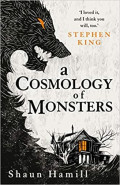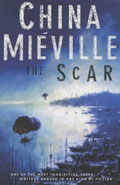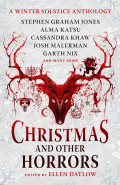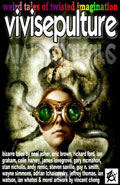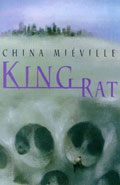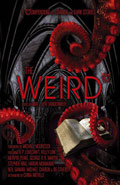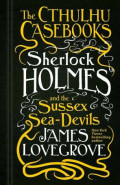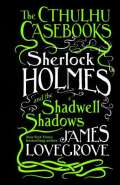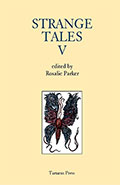The Call of Cthulhu & Other Weird Stories
By HP Lovecraft
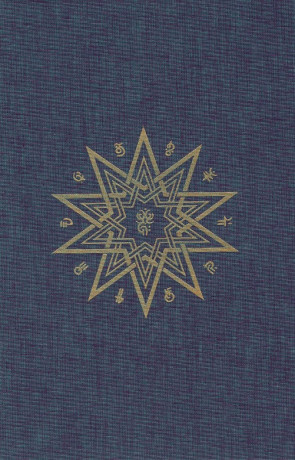
- The Call of Cthulhu & Other Weird Stories
-
Author: HP Lovecraft
-
Publisher: The Folio Society
- ISBN:
- Published: June 2017
- Pages: 472
- Format reviewed: Hardback
- Review date: 28/07/2017
- Language: English
To many, HP Lovecraft is seen as the father of modern horror and The Call of Cthulhu is undoubtedly his most famous work. Like many artists Lovecraft wasn't appreciated during his lifetime and his work only achieved success and literary recognition after his death. Collectively these weird tales (and others) have had a lasting influence on 20th century horror literature while also influencing popular culture and film to this day.
Thankfully The Folio Society have created a bound, illustrated edition of The Call of Cthulhu & Other Weird Stories that celebrates these stories in all their weird glory, with a special introduction by none other than the legendary Alan Moore. Six illustriously eerie, unique illustrations have been provided by the noted artist Dan Hillier.
Edited by S.T. Joshi, THE leading figure in the study of HP Lovecraft, the book spans the authors literary career with 18 of his short stories. From Dagon - one of Lovecraft's very first tales, written in 1917 - through The Rats in the Walls and of course The Call of Cthulhu to The Shadow over Innsmouth and The Haunter of the Dark, both originally published a year before Lovecraft's untimely death in 1937.
The quality of the book is exceptional, set in cloth and blocked with a design by Hillier. The book is completed with gilded tops and a printed slipcase. The print is set in the Italian Old Style font which provides a typeset appreciative of the era.
Of course its also the content that matters and the 18 Lovecraft tales are the finest the author produced. There is also a strictly limited edition version which is pitch black, gorgeously embossed and housed in a sea-green and purple duotone box.
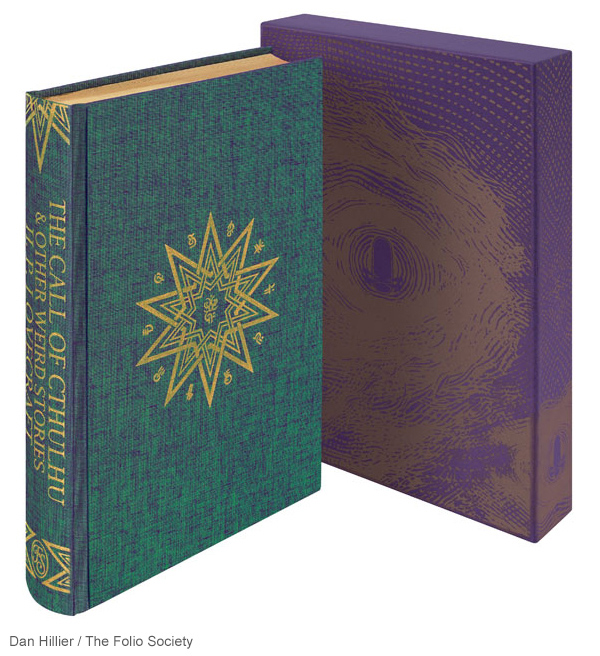
1. Dagon. Written in 1917, Dagon was one of the first stories Lovecraft wrote as an adult. A tortured, morphine addicted man describes an incident during his service as an officer during World War One. Said officer is adrift on a lifeboat following an attack and becomes stranded in a strange mire:
A slimy expanse of hellish black mire which extended about him in monotonous undulations as far as he could see...
Dagon is an early glimpse into the (weird) imagination of the author who later wrote of the inspiration for the story:
"I dreamed that whole hideous crawl, and can yet feel the ooze sucking me down!"
2. The Statement of Randolph Carter. Written in 1919, this story is the first in the authors series known as the Dream Cycle and introduces us to Randolph Carter. Carter is found wondering through a swamp in an amnesiac shock. He attempts to explain the strange disappearance of his friend Harley Warren.
The place was an ancient cemetery; so ancient that I trembled at the manifold signs of immemorial years. It was in a deep, damp hollow, overgrown with rank grass, moss, and curious creeping weeds, and filled with a vague stench which my idle fancy associated absurdly with rotting stone.
This story has directly inspired a number of horror films, including The Testimony of Randolph Carter, The Unnamable and the imaginately titled The Unnamable II: The Statement of Randolph Carter.
3. Facts Concerning the Late Arthur Jermyn and His Family. This is an odd little tale, describing the "Family" and ancestory of Arthur Jermyn who's great great great Grandfather had been an explorer of the Congo and who eventually became an inmate of an Asylum. The Jermyn family are said to have an "unsual physical appearance".
It has been said that Lovecraft's intention was to create the horror of a twisted family secret however unintentionally the story is also a metaphor for class snobbery and bigotry. Something that occurs in other Lovecraft works and is commented on in a recent article by The Independent.
4.Celephaïs. As with many of his stories, Celephais was inspired by a dream of Lovecraft flying over a strange city, eventually this city appears in his Dream Cycle series. The story follows that a child of the English Gentry dreams of the city, and then later in life as a forty something adult alone in London these dreams return, and of course things get a bit weird.
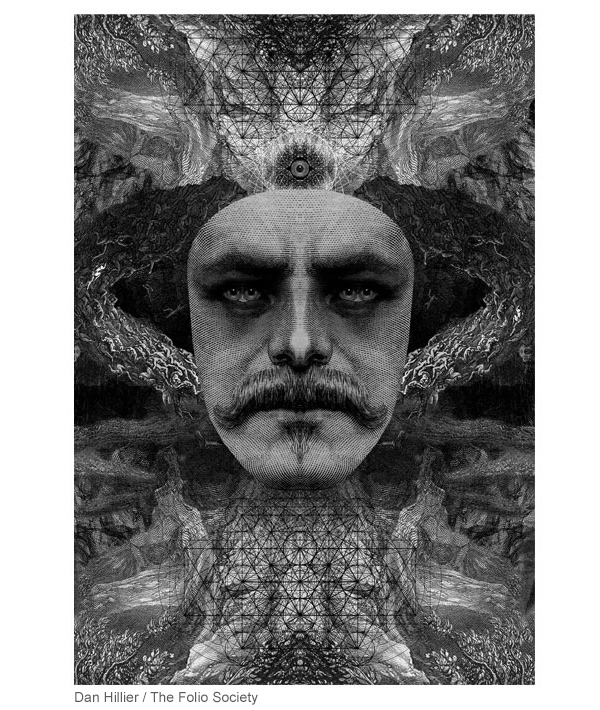
5. Nyarlathotep. The name of a Cthulhu entity, this short story is written in the first person of a witness and describes Nyarlathotep as one of the race of the Pharaohs. He is said to have been dormant for the past twenty seven centuries and displays supernatural powers.
I remember when Nyarlathotep came to my city—the great, the old, the terrible city of unnumbered crimes. My friend had told me of him, and of the impelling fascination and allurement of his revelations, and I burned with eagerness to explore his uttermost mysteries. My friend said they were horrible and impressive beyond my most fevered imaginings; that what was thrown on a screen in the darkened room prophesied things none but Nyarlathotep dared prophesy, and that in the sputter of his sparks there was taken from men that which had never been taken before yet which shewed only in the eyes.
6. The Picture in the House. A lone traveller on a bicycle trip through the fictional Miskatonic Valley of rural New England seeks shelter from an approaching storm. Finding what seems to be an abandoned house he is shocked to find a strange old ragged man living there. The Picture in the House is the beginning of a series of stories that feature a New England setting that combines real and fictitious locations. These setting became known as Lovecraft Country.
7. The Outsider. Written in the first person, The Outsider describes a mysterious man who has been living alone in a dark, decaying castle in an endless forest with high trees blocking out any real light. The man decides to try and "escape", to seek human contact and maybe witness light for the first time. The Outsider remains one of Lovecraft's most popular and enduring stories. Four lines from the final Stanza of John Keats poem "The Eve of St. Agnes" form the motto of the story.
I know not where I was born, save that the castle was infinitely old and infinitely horrible; full of dark passages and having high ceilings where the eye could find only cobwebs and shadows. The stones in the crumbling corridors seemed always hideously damp, and there was an accursed smell everywhere, as of the piled-up corpses of dead generations.
8. Herbert West -- Reanimator. This little horror story is one of the first times in literature that Zombies are mentioned as reanimated corpes with agressive, uncontrollable temperaments. According to later letters, Lovecraft wrote Herbert West -- Reanimator as a parody of Mary Shelley's Frankenstein. It's the first time that the Miskatonic University is mentioned (a building that later forms a part of the Cthulhu Mythos). The story has been the inspiration for a number of films.
9. The Hound. Not to be confused with the character in Game of Thrones, this short story is the first time that infamous fictional tome the Necronomicon is mentioned. The story follows the narrator and his friend St John who both have a strange interest in robbing graves. They collect souvenirs and one day learn the resting place of one the most famous grave robbers. This robber supposedly stole a “potent thing from a mighty sepulcher." On reaching the cemetery they hear the baying of a giant hound...
...worst of all, the faint deep-toned baying of some gigantic hound which we could neither see nor definitely place. As we heard this suggestion of baying we shuddered, remembering the tales of the peasantry; for he whom we sought had centuries before been found in this selfsame spot, torn and mangled by the claws and teeth of some unspeakable beast.
10. The Rats in the Walls. This creepy little tale is set in England, 1923. Narrated by the last surviving descendant of the De la Poer Family following his sons death in the first world war. He moves to the ruined Exham Priory and begins restoring it but after moving in hears the sounds of rats moving within the walls. Of course this being Lovecraft these aren't your usual "rats". The Rats in the Walls is one of the more macabre tales in the collection.
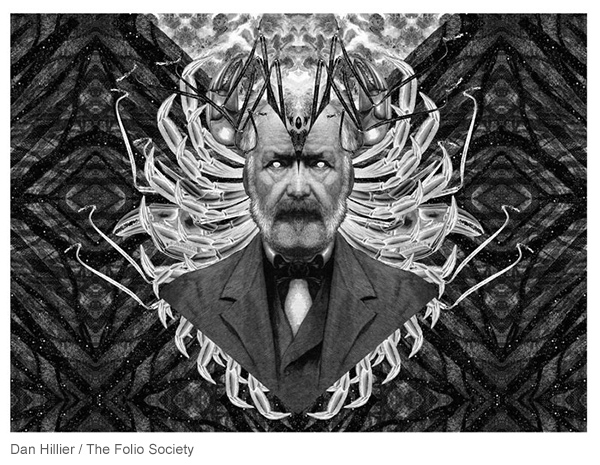
11. The Festival. Considered to be one of the first Cthulhu mythos stories, The Festival is set during the Christmas period. The narrator pays visit to the (fictional) "ancient sea town" of Kingsport, Massachusetts which seems to be mostly empty and out of date by a few hundred years. It's one of the more poetic of stories in the collection, and one of my personal favourites.
Out of the unimaginable blackness beyond the gangrenous glare of that cold flame, out of the Tartarean leagues through which that oily river rolled uncanny, unheard, and unsuspected, there flopped rhythmically a horde of tame, trained, hybrid winged things that no sound eye could ever wholly grasp, or sound brain ever wholly remember. They were not altogether crows, nor moles, nor buzzards, nor ants, nor vampire bats, nor decomposed human beings; but something I cannot and must not recall.
12. He. A horror story which depicts a man moving from New England to New York City and regretting it almost immediately. Wondering through Grenwich village he meets a man dressed in 18th century clothing who offers to show the protagonist around. After taking him to his home, the man tells the protagonist of a bargain that was truck between a local squire and Native Americans which provided the squire with the knowledge of rituals to control time and space. He was inspired by Lovecraft's trip to New York, which he despised.
13. Cool Air. This is this is the second story "inspired" by Lovecraft's trip to New York City. The narrator descibes house hunting in New York and upon finding a coverted brownstone on West Fourteenth Street has to investigate a "chemical leak" coming from the floor above. Cool Air has been adapted for film on a number of occasions, most recently by director Bryan Moore. It has also been adapted for Television on a number of occasions and even immortalised in music by the American progressive rock band "Glass Hammer".
14. The Call of Cthulhu. While The Outsider might be popular, The Call of Cthulhu is by far the most famous story penned by Lovecraft and played a large part in popularising the Cthulhu Mythos. The collective Cthulhu Mythos has spawned films, video games, roleplay games and novels by other authors in the "shared Cthulhu Universe". To begin with these authors mainly included friends of Lovecraft, such as Clark Ashton Smith, Robert E. Howard and Robert Bloch. From the early 1970's to early 1990's Brian Lumley wrote a number of novels collectively known as the Cthulhu Cycle Deities, featuring the character Titus Crow. Today Cthulhu is more popular than ever, with satirical "Cthulhu for President" campaigns (why settle for a lesser evil), a Sherlock Holmes and Cthulhu series of novels by James Lovegrove and even Cthulhu plush toys.
Currently there are a number of authors writing Cthulhu fiction, some re-writing Lovecrafts stories for the 21st century while others, like Jonathan L Howard, combining Cthulhu with their own creations.
The most merciful thing in the world, I think, is the inability of the human mind to correlate all its contents. We live on a placid island of ignorance in the midst of black seas of infinity, and it was not meant that we should voyage far.
15. The Colour Out of Space. This little gem is set in the fictional city of Arkham, part of "Lovecraft Country". The narrator is researching a story of a meteorite crashing to earth in an area imaginatively known as "blasted heath", located in the hills to the west of Arkham. The crash is said to have caused widespread poisoning of the wild life, resulting in strange deformaties of plant and animal life along with insanity for those poor fools who venture onto the heath - not to mention those unlucky enough to be in the vicinity at the time of impact.
16. The Whisperer in Darkness. The narrator of this tale is Albert N. Wilmarth, who is a Lecturer at the Miskatonic University in Arkham. Wilmarth becomes involved in investigating sightings of strange things floating in the river following a monumental flood.
In 2011 an independent film of the same name was made that follows the story closely. Produced to have the look and feel of the classic 1930's horror films, it has been acclaimed by a number of critics and became nominated fora number of awards.
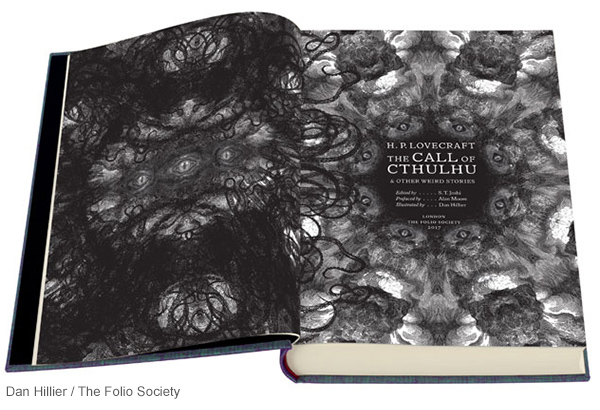
17. The Shadow Over Innsmouth. Another of Lovecrafts more well known stories, it forms part of his Cthulhu Mythos, this time concerning an underwater civilisation. The story differs from most of the authors other works in that it contains a good deal of action towards the end.
The story has been turned into film on a number of occasions with various degree's of success. In 2007 an independent film simply called Cthulhu was released, based "loosely" on the plot. Since 2015 the director Bryan Moore (he who made the film of Cool Air) has been promising a faithful recreation of the story - even releasing a teaser in early 2017.
The Shadow over Innsmouth has also been turned into and given inspiration to a wide variety of media including card games, board games, video games and even a radio play.
18. The Haunter of the Dark. This was the last known work by Lovecraft, before his untimely death at the hands of an old one of cancer. It forms part of the Cthulhu Mythos and is the sequel to The Shambler from the Stars written by Robert Bloch. Bloch went on to write a third part to the story The Shadow from the Steeple in 1950.
The story is set in Lovecraft's home town of Providence, Rhode Island and tells the tale of a fan of the occult becoming fascinated with a large disused church set on Federal Hill. He discovers that the church may have links to a sinister cult and that it has a dark reputation with the locals.
In his diary he told of the hideous experience which had brought the collapse. After retiring on the night of the 30th he had suddenly found himself groping about in an almost black space. All he could see were short, faint, horizontal streaks of bluish light, but he could smell an overpowering foetor and hear a curious jumble of soft, furtive sounds above him. Whenever he moved he stumbled over something, and at each noise there would come a sort of answering sound from above—a vague stirring, mixed with the cautious sliding of wood on wood.
Overall, The Call of Cthulhu & Other Weird Stories is a varied and rich collection of the finest Lovecraft fiction. It's wonderfully weird and creepy and The Folio Society version celebrates this unusual literature perfectly.
Written on 28th July 2017 by Ant .
